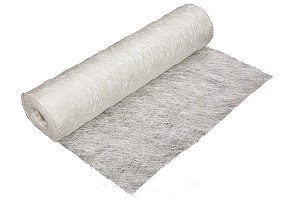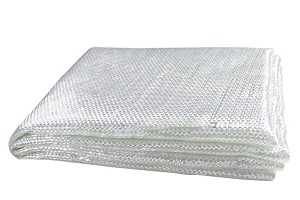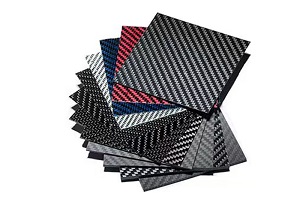- Home
- Fiberglass Fabrics
Supply High Quality Fiberglass Fabrics
Fiberglass Fabrics also called fiberglass cloth is a woven fabric that provides excellent strength , low weight, and solid cosmetics. Are the most commonly used reinforcement in the composites industry due to their affordability and ease of handling. They provide excellent strength, low weight, and attractive aesthetics when combined with resin.Commonly available in 6 and 10-ounce weights, these plain weave fabrics deliver uniform strength both horizontally and vertically. These fiberglass fabrics are woven to achieve specific fiber orientations, offering various weights, strengths, and characteristics to suit different applications.
Woven fiberglass fabrics are prevalent in marine and composite construction, as well as for repairs. They are composed of glass strands and are saturated with resin to form a durable, strong material. Lower-weight fabrics are ideal for waterproofing, while heavier weights enhance laminate thickness. Cured fiberglass laminates resist UV rays and high temperatures, making them suitable for boat construction and other demanding environments.
News
- Exploring the Benefits of Carbon Fiber Apparel
- How to Work with Carbon Fiber Successfully
- Carbon Fiber Suit: The Future of Lightweight Armor
- Is Carbon Fiber Armor the Future of Protection?
- Why White Carbon Fiber is Popular in Automotive Design
- Transparent Carbon Fiber Sheets: Strength Meets Clarity in Design
- Chopped Carbon Fiber Mat for Lightweight Reinforcement
- Carbon Fiber EG Hatch: Upgrade Your Civic Today
- The Benefits of Using Structural Carbon Fibre in Engineering
- How Many Layers of Layered Carbon Fiber Are Needed?
Simplifying Your Life: Key Functionalities

| Attribute | Details |
|---|---|
| Product Name | Fiberglass Fabrics |
| Material | 100% Fiberglass |
| Glass Type | E-glass, C-glass |
| Weave Type | Plain Woven, Twill Woven |
| Alkali Content | Alkali-Free, Medium Alkali |
| Weight Range | 45 g/m² - 1740 g/m² |
| Width | 50mm - 3000mm (customizable) |
| Thickness | 0.1mm - 20mm (customizable) |
| Surface Treatment | Uncoated, PTFE Coated, Silicon Coated, PVC Coated, Resin Coated, Aluminum Foil Coated |
| Roll Length | 50m - 2000m per roll |
| Standing Temperature | -196℃ to 550℃ |
| Key Features | High Temperature Resistance, Corrosion Resistance, Non-stick Surface, Flame Retardant, Lightweight, High Strength-to-Weight Ratio, Easy Installation |
| Applications | Wall/Roof Covering Cloth, High-Temperature Protection, FRP Product Manufacturing, Boat Building, Insulation, Waterproofing, Blinds, Mosaic Backing |
| Processing Services | Cutting, Dividing, Coating |
| Certification | CE, ISO 9001, MSDS, EN1869:2019 |
| Color | White or Customized |
| Place of Origin | Hebei, China |
| Brand Options | GangLong Fiberglass |
Thank you for your interest in our products. To receive our pricelist or for any inquiries, please fill out the form below. We will get back to you within 24 hours.
What Are Fiberglass Fabrics?
Definition and Composition
Fiberglass Fabrics are a type of reinforcement material made from woven glass fibers. These fibers are produced by melting glass and spinning it into thin strands, which are then woven into fabric form. The resulting fiberglass fabrics are known for their strength, durability, and lightweight properties. The composition of fiberglass fabrics includes various glass fiber types, such as E-glass (electrical glass) and S-glass (structural glass), each offering different mechanical and thermal characteristics. To enhance their performance, fiberglass fabrics are often combined with resins, creating composite materials that are used in numerous industrial applications.
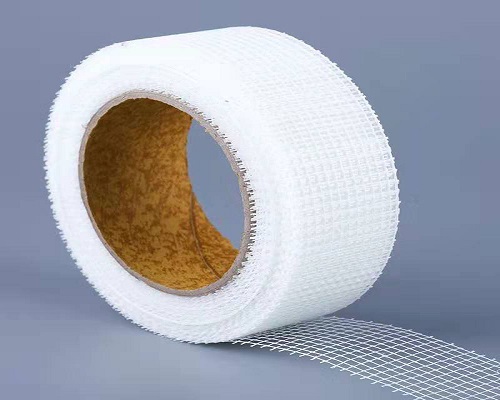
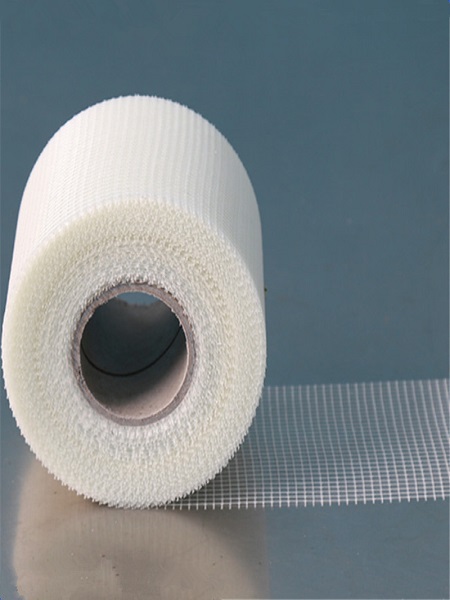
Types of Fiberglass Fabrics
Fiberglass Cloth Types
Woven Fabrics: Fiberglass woven fabrics are produced by interlacing glass fibers in specific patterns, making them suitable for various applications, including insulation materials like fiber glass duct board.The two main types are:
Plain Weave: This is the most basic weave pattern, where fibers are interlaced over and under in a simple grid-like structure. Plain weave fiberglass fabrics offer a balanced combination of strength and flexibility. They are commonly used for general reinforcement in composite materials, providing good performance for a wide range of applications.
Twill Weave: Twill weave fabrics feature a diagonal pattern of interlaced fibers, which enhances their drapability and strength. This type of weave is often used in applications that require increased durability and resistance to impact. Twill weave fiberglass fabrics are preferred in automotive, aerospace, and marine industries for their superior mechanical properties.
Non-Woven Fabrics: Unlike woven fabrics, non-woven fiberglass fabrics are made from randomly oriented glass fibers that are bonded together using a binder.
Fiberglass Mat: This type of non-woven fabric consists of chopped glass fibers that are held together with a resin binder. Fiberglass mat is valued for its ease of use in layering and its ability to conform to complex shapes. It is commonly used in boat building, automotive repairs, and other applications requiring thick, structural reinforcement. The mat’s ability to be molded and layered makes it ideal for creating durable composite parts.
Fiberglass Cloth and Resin
Combination Benefits: When fiberglass cloth is combined with resin, it forms a composite material that boasts enhanced strength and durability. The resin acts as a binding agent, filling the spaces between the fibers and hardening to create a rigid structure. This combination results in a material that is both lightweight and incredibly strong, making it suitable for high-performance applications. The fiberglass cloth provides reinforcement, while the resin ensures that the fibers remain firmly in place, improving the overall mechanical properties of the composite.
Common Applications: Fiberglass cloth and resin composites are used in a variety of applications. For example:
Boat Building: The combination of fiberglass cloth and resin is widely used in boat construction for creating hulls and decks. The strength and resistance to water damage make it ideal for marine environments.
Automotive Parts: In the automotive industry, fiberglass composites are used for making lightweight yet strong components like bumpers and body panels.
Aerospace: Fiberglass composites are employed in the aerospace sector for structural components due to their high strength-to-weight ratio.
Construction: In construction, fiberglass-reinforced composites are used for architectural features and structural components that require both durability and aesthetic appeal.
Applications of Fiberglass Fabrics
Fiberglass Fabrics for Boats
Fiberglass Cloth Roll for Boats: Fiberglass Fabrics are indispensable in the marine industry, particularly in boat construction and repair. Fiberglass cloth rolls are widely used due to their ability to provide strong, durable, and lightweight reinforcement. The rolls come in various weights and weaves, allowing boat builders to select the appropriate type for specific parts of the boat. The cloth is applied in layers and combined with resin to create a robust composite material that resists water, impact, and corrosion. This makes fiberglass cloth rolls ideal for creating boat hulls, decks, and other critical components that must withstand harsh marine conditions. The flexibility and ease of handling fiberglass fabric rolls further enhance their effectiveness in ensuring a high-quality finish and structural integrity.
Industrial and Commercial Uses
Applications Across Industries: Fiberglass Fabrics find extensive use in multiple sectors due to their versatile properties. In the aerospace industry, fiberglass composites are used to manufacture lightweight yet strong components, contributing to fuel efficiency and performance, similar to how canoe fiberglass enhances the durability and performance of watercraft. The automotive sector benefits from fiberglass fabrics in the production of body panels, bumpers, and other parts that require both strength and reduced weight. In marine applications, as previously discussed, fiberglass is crucial for boat construction and repair. Additionally, in the manufacturing industry, fiberglass fabrics are employed to create molds and structural supports that enhance product durability and longevity.
Everyday Items: Fiberglass Fabrics are also utilized in various consumer products and everyday items. For example, they are used in the production of durable and lightweight surfboards, which benefit from the high strength-to-weight ratio of fiberglass composites. Fiberglass is also found in some types of home insulation, providing thermal resistance and energy efficiency. Other common products include automotive parts like bumpers and panels, which are reinforced with fiberglass for added durability, as seen in components such as fiberglass tub access panel that benefit from the strength and lightweight properties of fiberglass. In construction, fiberglass fabrics are used in architectural features and structural elements that require a combination of strength and aesthetic appeal. The widespread use of fiberglass fabrics in these applications highlights their versatility and effectiveness in enhancing product performance and durability.
Where to Find Fiberglass Fabrics?
Fiberglass Fabrics Suppliers
Finding Local Suppliers: Locating Fiberglass Fabrics near you can be done through a few key methods. Start by searching for local industrial supply stores or building material suppliers, as they often stock fiberglass fabrics or can order them for you. Checking with local boat supply shops or aerospace parts distributors can also yield good results, as these industries frequently use fiberglass fabrics. Additionally, attending trade shows or industry-specific events can connect you with suppliers who specialize in fiberglass materials. Networking with professionals in related fields, such as construction or automotive repair, can also provide leads on where to find high-quality Fiberglass Fabrics locally.
Online Resources: For a broader selection, online resources offer convenient access to fiberglass fabrics wholesale or retail. Websites of major industrial suppliers, provide a variety of fiberglass fabrics with detailed specifications. Specialized online manufacturers suppliers like GangLong Fiberglass offer extensive inventories, including different types and weights of fiberglass fabrics.
Fiberglass Fabrics for Sale
Types and Availability: When looking to purchase Fiberglass Fabrics, you will find various types available for sale, including woven fabrics, fiberglass mats, and specialty cloths. Retailers and suppliers typically offer these fabrics in different forms, such as rolls or sheets, catering to various needs from general reinforcement to specialized applications. It’s essential to identify the type of fiberglass fabric that suits your project requirements, such as the weave pattern, weight, and resin compatibility.
Considerations for Buying: Several factors should be considered when purchasing Fiberglass Fabrics. Quality is paramount, as higher-quality fabrics will provide better performance and durability. Look for fabrics with consistent fiber orientation and good tensile strength. Price is also a significant consideration; while it’s important to find competitive pricing, be cautious of extremely low prices which may indicate lower quality materials. Additionally, ensure that the supplier provides detailed product information and customer support to assist with your specific needs. By evaluating these factors, you can make an informed decision and acquire the right Fiberglass Fabrics for your project.
Buying Guide
Fiberglass Fabrics Wholesale vs. Retail
Cost Considerations: When purchasing Fiberglass Fabrics, deciding between wholesale and retail options can significantly impact your cost. Buying fiberglass fabrics wholesale is typically more cost-effective, especially for large quantities. Wholesale suppliers (such as GangLong Fiberglass) often offer discounts for bulk purchases, which can reduce the per-unit price. This is particularly advantageous for commercial projects or large-scale applications where significant amounts of fabric are needed. On the other hand, retail purchases are generally suitable for smaller projects or individual needs, where the convenience of purchasing smaller quantities might outweigh the cost benefits of buying wholesale. Retail prices may be higher per unit, but they offer flexibility for smaller-scale or one-time use.
Choosing the Right Fiberglass Fabric
Factors to Consider: Selecting the appropriate Fiberglass Fabrics requires careful consideration of several factors:
Weight: The weight of the fabric affects its strength and application suitability. Heavier fabrics are generally used for structural reinforcement, while lighter fabrics might be chosen for applications requiring flexibility and ease of handling.
Strength: Different types of fiberglass fabrics offer varying levels of strength and durability. For applications that demand high strength and resistance to impact, such as in aerospace or marine industries, selecting a high-strength fabric is crucial.
Weave Type: The weave pattern of the fiberglass fabric influences its properties. Plain weave fabrics offer balanced strength and flexibility, while twill weave fabrics provide greater durability and impact resistance. The choice of weave type should align with the specific requirements of your project.
Intended Application: Consider the end use of the fiberglass fabric. For example, boat building might require fabrics with high water resistance, while automotive applications may focus on impact strength and weight reduction. Matching the fabric’s characteristics to the intended application ensures optimal performance.
Fiberglass Fabric Roll: Purchasing Fiberglass Fabrics in roll form offers several advantages. Rolls are convenient for large-scale projects, allowing for continuous application without the need for joining smaller pieces. They are easier to handle and store compared to pre-cut sheets. Rolls also provide flexibility in cutting to desired lengths and shapes, which is beneficial for custom applications. Additionally, buying in roll form can be more economical, especially if you anticipate needing a significant amount of fabric for a project. This option is ideal for applications that require consistent material coverage and performance, such as in boat construction or large industrial uses.
Fiberglass Fabrics of Safety and Maintenance
Handling Fiberglass Fabrics
Safety Precautions: When working with Fiberglass Fabrics, it’s essential to follow safety precautions to avoid irritation and health issues. Fiberglass fabrics contain fine glass fibers that can irritate the skin, eyes, and respiratory system. To protect yourself, always wear protective clothing, including gloves, long-sleeved shirts, and safety goggles. A dust mask or respirator is recommended to prevent inhalation of fiberglass dust. Work in a well-ventilated area to minimize dust accumulation and potential airborne fibers. If fiberglass particles come into contact with your skin, promptly wash the area with soap and water. For any dust or residue on your clothing, shake out the fabric outdoors before washing it separately from other laundry. Proper disposal of any waste materials, such as cuttings and trimmings, is also important to prevent environmental contamination.
Maintenance Tips
Care Instructions: Maintaining Fiberglass Fabrics properly ensures their longevity and continued performance. To clean fiberglass fabrics, avoid using harsh chemicals or abrasive materials that might damage the fabric. Instead, use a mild detergent and a soft brush or cloth to gently clean the surface. For more extensive cleaning, particularly if the fabric has been exposed to heavy dirt or contaminants, consider using a diluted vinegar solution to remove residues without harming the fiberglass. After cleaning, ensure the fabric is thoroughly dried to prevent mold and mildew growth. Store fiberglass fabrics in a dry, cool place away from direct sunlight to prevent degradation. Regularly inspect the fabric for signs of wear or damage and repair any issues promptly to maintain its structural integrity. By following these care instructions, you can extend the life of your fiberglass fabrics and ensure they continue to perform effectively in their intended applications.
3 Types of Weaves Fiberglass Fabrics
Fiberglass fabrics are woven using different techniques that significantly impact their performance, durability, and applications. The three most common types of weave are Plain Weave, Twill Weave, and Satin Weave. Here’s an in-depth look at each:
Plain Weave
Description:
The plain weave is the most basic and commonly used weave structure. In this weave, each fiberglass filament or yarn alternates over and under the adjacent yarns in a simple crisscross pattern. This results in a checkerboard design on the fabric’s surface, where each yarn crosses over one and under the other.
Structure:
- Over, Under: Each fiber alternates over one warp thread and under the next warp thread.
- Balanced Weave: The number of warp and filling threads is usually equal, creating a fabric with uniform strength in both directions.
Properties:
- Strength: Plain weave provides a solid, balanced structure, which is relatively strong and stiff.
- Dimensional Stability: It maintains its shape well, making it resistant to stretching or shrinking under tension.
- Cost-Effective: Due to its simple construction, plain weave fabrics are typically less expensive than other weaves.
Applications:
Plain weave is widely used in a variety of industrial applications due to its durability and simplicity. Common uses include:
- Reinforcement in composites: It is used in the manufacturing of fiberglass-reinforced plastics, automotive parts, and construction materials.
- Insulation: Fiberglass fabrics with a plain weave are often used in thermal and electrical insulation products.
- Filters and screens: The uniform mesh can be used for filtration systems, such as in chemical processing or industrial filtration.
Advantages:
- Excellent for general-purpose applications.
- Good dimensional stability.
- More cost-effective for bulk production.
Disadvantages:
- Not as flexible or drapable as other weaves.
- May not provide as much strength in certain directions compared to other weave types.
Twill Weave
Description:
In a twill weave, each fiber passes over one or more threads before going under one or more threads, resulting in a characteristic diagonal or herringbone pattern on the fabric’s surface. The diagonal pattern occurs due to the step-over method used during weaving.
Structure:
- Step-over Pattern: Unlike the plain weave, the yarns in a twill weave overlap in a staggered, step-over pattern, resulting in a diagonal line across the fabric.
- Warp and Weft Threads: The number of warp and weft threads can vary, but the distinctive diagonal lines are the defining feature.
Properties:
- Strength and Durability: The diagonal weave enhances the fabric’s strength, especially in the direction of the diagonal, making it ideal for high-stress applications.
- Flexibility: Twill fabrics are more flexible and drape well, making them easier to mold or shape, which is important for parts requiring complex geometry.
- Abrasion Resistance: The diagonal pattern also increases the fabric’s resistance to abrasion compared to plain weave fabrics.
- Less Transparency: Twill weave is denser than plain weave, making it less transparent and better for applications requiring a solid, non-permeable material.
Applications: Twill weave is used in applications that require both strength and flexibility, including:
- Automotive industry: Twill weave fiberglass fabrics are used in automotive components, particularly for parts that need to withstand high stress, such as body panels or reinforcement for lightweight construction.
- Marine industry: Fiberglass fabrics with a twill weave are commonly used in the construction of boats and other watercraft, where flexibility and strength are required.
- Aerospace: Twill weave is often used in composites for aerospace applications, including structural parts that need to balance strength with weight considerations.
Advantages:
- Higher strength-to-weight ratio compared to plain weave.
- Enhanced flexibility and drapeability.
- Better abrasion resistance and durability.
Disadvantages:
- More complex to manufacture, making it more expensive than plain weave.
- More prone to fraying on the edges due to the exposed yarns.
Satin Weave
Description:
Satin weave is characterized by a smooth, shiny surface due to the long floats of yarn that pass over several threads before going under one. This gives the fabric a smooth texture and a glossy finish. The weave structure results in fewer interlacing points compared to plain or twill weaves.
Structure:
- Long Floats: The warp or filling fibers (depending on the type of satin weave) will pass over multiple threads before passing under one, creating a smooth surface with long floats.
- Shiny Finish: The fewer intersections between fibers allow the light to reflect off the surface, giving the fabric its characteristic gloss or shine.
Properties:
- Smooth Surface: Satin weave results in a smooth, even surface that is highly reflective and visually attractive.
- Strength: While satin weaves are less strong than plain or twill weaves in terms of the number of interlaced fibers, the long floats can enhance certain mechanical properties like flexibility and stretch in specific directions.
- Abrasion Resistance: Satin fabrics are often more delicate and may have lower abrasion resistance compared to twill or plain weave fabrics.
- Cost: Satin weaves are more complex and time-consuming to produce, making them more expensive than plain weave fabrics.
Applications: Satin weave fabrics are often used in high-performance applications where aesthetics and strength need to be balanced:
- Aerospace and Defense: Satin weave is frequently used in the production of composite materials for aerospace applications, where strength-to-weight ratio is critical and the smooth surface reduces drag or improves aerodynamic efficiency.
- High-Performance Composites: In advanced composite materials, satin weaves are used in applications such as pressure vessels or wind turbine blades, where smooth surfaces and reduced weight are beneficial.
- Decorative and High-Performance Fabrics: The smooth, glossy finish is also desirable in applications where the appearance is important, such as in some types of marine fabrics or decorative applications.
Advantages:
- High aesthetic appeal due to its shiny, smooth surface.
- Good for applications where a lightweight and flexible material is needed.
- Reduced drag in fluid-based applications, such as in aerospace.
Disadvantages:
- Lower abrasion resistance compared to other weaves.
- More prone to damage due to long floats.
- Expensive to produce.
The choice of fiberglass fabric weave depends largely on the specific requirements of the application:
- Plain Weave: Best for general-purpose applications requiring stability and strength, like insulation and composite reinforcement.
- Twill Weave: Ideal for applications that need a combination of strength, flexibility, and abrasion resistance, such as automotive and marine components.
- Satin Weave: Suitable for high-performance applications where a smooth, glossy surface and reduced weight are important, such as aerospace and high-end composites.
Each weave type balances strength, flexibility, and cost differently, so selecting the right one depends on the intended use of the fiberglass fabric.
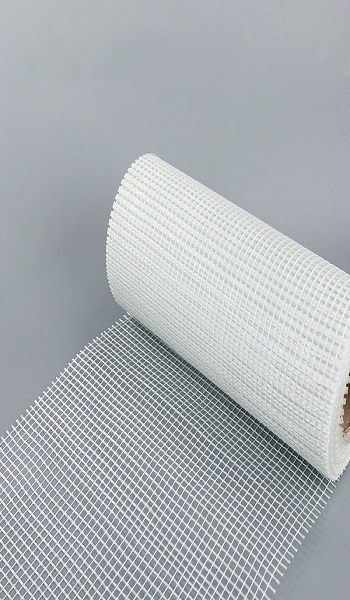
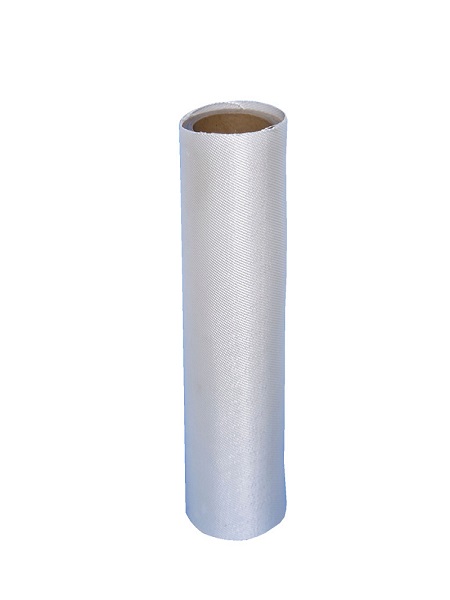
Uses of Fiberglass Fabrics
Fiberglass fabrics are highly versatile and used in a wide range of industries due to their strength, light weight, and resistance to heat and corrosion. Below are some of the most common and specialized uses of fiberglass fabrics:
Reinforcement in Composite Materials
Fiberglass fabrics are extensively used to reinforce composite materials, particularly when combined with resin (such as polyester, epoxy, or vinylester). The fabric provides mechanical strength, while the resin bonds the fibers together, creating a composite material with excellent durability and resistance to environmental factors.
- Aerospace: Fiberglass composites are widely used in the aerospace industry for making lightweight yet strong parts, such as wing components, fuselage panels, and interior parts.
- Automotive: Used in car body panels, bumpers, and underbody parts, fiberglass-reinforced composites help reduce weight while maintaining strength, improving fuel efficiency and crash resistance.
- Marine: Fiberglass is a popular choice for boat hulls, decks, and marine structures due to its resistance to water and corrosion. It’s used in both recreational and commercial marine vessels.
- Sports Equipment: Lightweight but strong, fiberglass fabrics are used in making products like fishing rods, surfboards, skis, and bicycles.
Insulation
Fiberglass is an excellent insulator, both thermally and acoustically, and is used in various forms, including blankets, batt insulation, and pipe wrap.
- Thermal Insulation: Fiberglass insulation is commonly used in homes, commercial buildings, and industrial facilities to reduce energy consumption by providing thermal resistance.
- Acoustic Insulation: In both residential and commercial buildings, fiberglass insulation is used to reduce sound transmission between rooms or buildings.
- Pipe Insulation: Fiberglass blankets and wraps are commonly used to insulate hot or cold pipes in industrial settings, helping maintain the temperature of fluids and reducing energy costs.
Electrical Insulation
Fiberglass fabrics are also highly valued in electrical applications due to their resistance to heat and electrical conductivity. They are often used to create electrical insulation for wiring and other components.
- Wires and Cables: Fiberglass cloth is used as an insulating layer around electrical wires and cables, particularly in high-temperature environments such as in power plants or electrical equipment.
- Transformers: Fiberglass fabrics are used in transformer windings and other high-voltage electrical components because they can withstand extreme temperatures and resist electrical breakdown.
- Circuit Boards: Fiberglass is commonly used as a substrate in the manufacture of printed circuit boards (PCBs), especially in the form of FR4 (a composite of fiberglass and resin).
Fireproofing and Flame Retardant Fabrics
Fiberglass is naturally flame-resistant, making it ideal for use in fireproofing applications. It is used in environments where heat or fire resistance is crucial.
- Fire Blankets: Fiberglass fabrics are often used to make fire-resistant blankets for both industrial and personal protection, such as for kitchen or electrical fires.
- Fireproof Doors and Walls: Fiberglass fabrics are incorporated into fire doors, firewalls, and fire-resistant panels to provide thermal protection in buildings.
- Protective Clothing: In industries like firefighting, aerospace, and industrial work, fiberglass fabrics are used in protective clothing, such as heat-resistant suits and gloves.
Industrial Filtration
Fiberglass fabrics are used as filter media in a wide range of industrial applications due to their ability to trap particles and resist high temperatures.
- Air Filtration: Fiberglass is commonly used in air filters for HVAC systems, industrial air pollution control, and respiratory protection masks. The fabric traps particles while allowing air to pass through.
- Water Filtration: Used in industrial and municipal water filtration systems, fiberglass fabrics can filter out particulates and other impurities.
- Chemical Filtration: In chemical processing, fiberglass fabrics are used to create filters for separating solids from liquids or gases.
Roofing Materials
Fiberglass fabrics are used as reinforcement in roofing materials, offering durability and resistance to UV rays and weathering.
- Asphalt Shingles: Fiberglass is used as a reinforcement in asphalt roofing shingles. It provides strength and flexibility while maintaining a lightweight design.
- Roof Membranes: Fiberglass-reinforced roofing membranes are used in flat roofs, providing waterproofing and protection against extreme weather conditions.
Construction and Building Materials
Fiberglass fabrics are incorporated into building materials for added strength and durability. These materials are commonly used in construction, renovation, and civil engineering projects.
- Reinforced Concrete: Fiberglass mesh and fabrics are used as reinforcement in concrete, increasing its tensile strength and reducing the potential for cracking.
- Wall Panels: Fiberglass panels, often reinforced with fabrics, are used in commercial and residential building facades, providing a lightweight yet strong alternative to traditional materials.
- Swimming Pools: Fiberglass is commonly used in the construction of swimming pool shells, offering excellent resistance to chemicals, temperature changes, and water pressure.
Protective and Decorative Coatings
Fiberglass fabrics can be used as a base for coatings and finishes, often used for aesthetic or protective purposes.
- Automotive Finishes: Fiberglass is used in automotive body parts and accessories, such as bumpers, spoilers, and fenders. The fabric helps reinforce the structure while the outer layer is coated for a smooth finish.
- Decorative Panels: In interior design, fiberglass fabrics are used to create decorative wall panels, ceilings, and other architectural elements due to their versatility, strength, and design flexibility.
- Corrosion Protection: Fiberglass fabrics coated with epoxy resins are used in industrial applications, such as pipe linings or tanks, to prevent corrosion from chemicals or moisture.
Aerospace and Aviation
Fiberglass is a critical material in aerospace, offering a combination of strength, light weight, and thermal resistance, making it ideal for high-performance environments.
- Aircraft Interiors: Fiberglass fabrics are used in interior panels, seats, and other components, providing strength while keeping the weight low for fuel efficiency.
- Satellite and Spacecraft Components: Fiberglass composites are used for structural components of satellites and spacecraft, as they can withstand extreme temperatures and pressures in space.
- Aircraft Wings and Fuselage: Fiberglass-reinforced composites are used in aircraft wings and fuselage sections to provide a lightweight, strong, and durable alternative to traditional materials like aluminum.
Civil Engineering and Infrastructure
Fiberglass fabrics are used in civil engineering projects, especially where durability and weight are important considerations.
- Bridge Construction: Fiberglass is used in the construction of bridge decks and supports to reduce weight while maintaining the necessary strength.
- Reinforced Structural Components: In buildings and infrastructure, fiberglass fabrics are used to strengthen beams, columns, and foundations, particularly in seismic areas where reducing the weight of the structure is critical.
- Piping Systems: Fiberglass-reinforced pipes are used in the construction of municipal water systems, sewage lines, and chemical pipelines due to their corrosion resistance and strength.
Fiberglass fabrics are incredibly versatile and serve a broad range of industries. Their strength, lightweight nature, fire resistance, and thermal properties make them invaluable in applications such as composite materials, insulation, filtration, and construction. The ability to customize fiberglass weaves (plain, twill, satin, etc.) further enhances its adaptability for specific applications, whether in aerospace, automotive, construction, or marine industries.
Woven Fiberglass Fabrics and Tapes
Woven fiberglass fabrics and tapes are highly versatile materials that combine the strength of fiberglass with the flexibility of woven structures. They are widely used in industrial, construction, and manufacturing applications due to their exceptional durability, heat resistance, and strength. Here’s a detailed look at both:
Woven Fiberglass Fabrics
Description:
Woven fiberglass fabrics are created by weaving glass fibers together, typically in plain, twill, or satin patterns. These fabrics are strong, lightweight, and resistant to heat, chemicals, and corrosion, making them suitable for demanding environments. They are typically used as reinforcement in composite materials and for insulation purposes.
Types of Woven Fabrics:
- Plain Weave: The most common type, offering good balance of strength and flexibility. It is used in applications like insulation and as a matrix for resin infusion in composites.
- Twill Weave: Known for its diagonal pattern, this type of fabric offers better drapability and flexibility, making it ideal for complex shapes in composite manufacturing, like automotive and aerospace parts.
- Satin Weave: Provides a smooth, shiny surface and is often used in applications requiring a high degree of surface finish, such as in high-performance composites in the aerospace industry.
Properties:
- Strength: Woven fiberglass fabrics have a high tensile strength, making them ideal for reinforcement in composite materials.
- Thermal Resistance: They can withstand high temperatures, which is why they are commonly used in applications where heat resistance is crucial.
- Corrosion Resistance: The fabrics are resistant to many chemicals and environmental factors, which makes them valuable in industries like chemical processing and marine applications.
- Lightweight: Despite their strength, these fabrics are relatively light, making them ideal for applications where weight reduction is a priority, such as in aerospace or automotive industries.
Fiberglass Tapes
Description:
Fiberglass tapes are narrow strips of woven fiberglass fabric that are often coated with a resin or adhesive to enhance their performance. These tapes retain the core properties of woven fiberglass, such as heat resistance, chemical resistance, and tensile strength, but in a more flexible and versatile form.
Types of Fiberglass Tapes:
- Uncoated Fiberglass Tape: Used for basic insulation and heat-resistant applications. It can be wrapped around cables, pipes, and components for insulation.
- Coated Fiberglass Tape: Typically coated with materials like silicone, PTFE (Teflon), or acrylic to add additional properties such as better adhesion, flame resistance, or flexibility.
Properties:
- Heat Resistance: Fiberglass tapes can withstand extremely high temperatures (often up to 1000°F or 540°C), making them ideal for use in high-heat environments like furnaces, boilers, and engines.
- Flexibility: While they are strong, fiberglass tapes are also flexible and can be wrapped around curved or irregularly shaped surfaces.
- Electrical Insulation: Many fiberglass tapes are used as electrical insulators in motors, transformers, and wiring, due to their non-conductive properties.
- Durability: The tapes resist tearing, abrasion, and UV degradation, making them suitable for outdoor and industrial applications.
Key Differences Between Fiberglass Fabrics and Tapes
- Shape & Flexibility: Fiberglass fabrics come in larger, flexible sheets, which are used for covering larger areas or in composite material production. Fiberglass tapes are narrow and more flexible, used primarily for wrapping and insulating.
- Applications: Fabrics are typically used for structural reinforcement in composites, whereas tapes are mostly used for insulation, protection, and sealing applications.
- Ease of Use: Fiberglass tapes are easier to handle for smaller-scale applications, such as wrapping cables, pipes, or specific components, while woven fabrics require more processing (such as resin impregnation) for their use in composites.
Both woven fiberglass fabrics and tapes offer excellent performance in high-temperature, high-stress, and corrosive environments. Fiberglass fabrics are used for composite reinforcement, insulation, and fireproofing, while fiberglass tapes are typically used for insulation, electrical applications, and heat protection. Their versatility and durability make them indispensable in industries ranging from aerospace and automotive to construction and manufacturing.
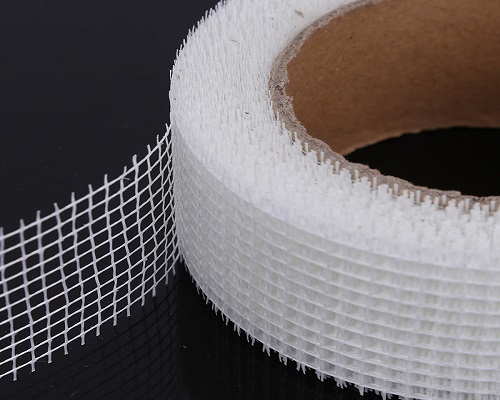
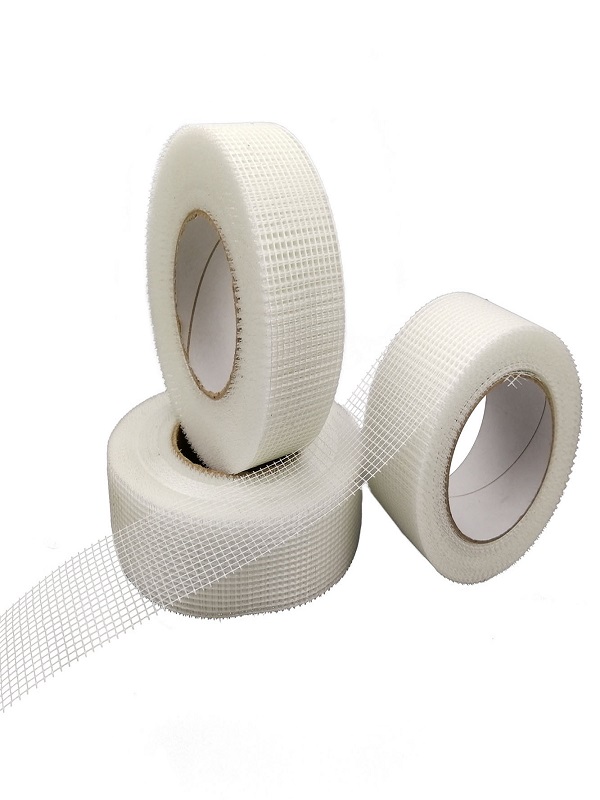
Dry Fiberglass Fabrics
Dry fiberglass fabrics refer to woven or nonwoven glass fiber fabrics that have not been pre-impregnated with any resin or adhesive. These fabrics are typically used as reinforcement materials in composite applications, where they are combined with resin (such as polyester, epoxy, or vinylester) at the point of use to create high-strength, lightweight composite parts.
Here’s a detailed look at dry fiberglass fabrics:
Characteristics of Dry Fiberglass Fabrics
Dry fiberglass fabrics retain the fundamental properties of glass fiber, including:
- High Strength: Fiberglass fibers are extremely strong, making dry fiberglass fabrics ideal for reinforcing composite materials. The fabric provides structural support to the resin and can withstand tensile forces without stretching.
- Lightweight: Dry fiberglass fabrics are lighter than many other reinforcing materials, which is crucial in applications where reducing weight is important, such as in aerospace or automotive industries.
- Thermal and Chemical Resistance: Dry fiberglass fabrics are resistant to heat (they can withstand high temperatures without degrading) and many chemicals, making them suitable for use in harsh environments, such as industrial applications or marine environments.
- Flexibility: The woven structure allows these fabrics to be flexible and conform to complex shapes, especially when impregnated with resin.
- Durability: Fiberglass fabrics are highly durable and resistant to wear, making them ideal for long-lasting applications.
Types of Dry Fiberglass Fabrics
Dry fiberglass fabrics come in a variety of weaves, weights, and thicknesses to suit different applications. Some of the most common types include:
Plain Weave Fiberglass Fabric: This is the most common type of dry fiberglass fabric. The yarns are woven over and under each other in a simple crisscross pattern. This type of fabric offers good strength and stability and is widely used in general composite reinforcement.
Twill Weave Fiberglass Fabric: A twill weave creates a diagonal pattern, which allows for better drapability and flexibility compared to plain weave fabrics. It’s often used for applications where complex molding or wrapping around intricate shapes is needed.
Satin Weave Fiberglass Fabric: Satin weave has a smooth surface due to longer yarn floats, making it suitable for applications requiring a glossy finish. It’s used in high-performance composites, such as in aerospace or automotive parts.
Chopped Strand Mat (CSM): This is a nonwoven fiberglass fabric, where short strands of fiberglass are randomly oriented and bonded together. CSM is used to quickly build thickness and strength in composite parts, often as a backing or filler layer. Though it is a nonwoven material, it is still considered a dry fiberglass fabric in certain forms.
Biaxial and Triaxial Fabrics: These are multi-axial fabrics that have multiple layers of fibers arranged at different angles (e.g., 0°/90° for biaxial, or 0°/90°/45° for triaxial). These fabrics offer enhanced strength in multiple directions, making them suitable for high-stress applications.
Applications of Dry Fiberglass Fabrics
Dry fiberglass fabrics are used in a wide range of industries and applications where strength, durability, and heat resistance are critical. Here are some of the main uses:
Composite Reinforcement
The most common use of dry fiberglass fabrics is as reinforcement in composite materials. When combined with resins, they form strong, lightweight, and durable materials used in:
- Aerospace: Dry fiberglass fabrics are used to make composite parts like wing structures, fuselage components, and interior panels in aircraft. The materials are lightweight, helping reduce fuel consumption while maintaining strength.
- Automotive: In the automotive industry, dry fiberglass fabrics are used for manufacturing body panels, bumpers, and other structural components. Fiberglass composites help reduce vehicle weight for better fuel efficiency and improved performance.
- Marine: Fiberglass is widely used in the marine industry for making boat hulls, decks, and other structures that need to be lightweight yet strong, and resistant to water and corrosion.
- Sports Equipment: Dry fiberglass fabrics are used in the manufacturing of items like fishing rods, surfboards, and skis, where strength and low weight are critical for performance.
Insulation
While dry fiberglass fabrics themselves are not used directly as insulation, they are used as reinforcement in insulation products, particularly in high-temperature applications, such as:
- Industrial Insulation: In furnaces, boilers, and power plants, dry fiberglass fabrics are impregnated with resin to create heat-resistant insulation materials. These fabrics help prevent energy loss by providing thermal insulation.
- Pipe and Duct Insulation: Dry fiberglass fabrics are used in the creation of insulation wraps for pipes and ducts in industrial and commercial settings.
Fireproofing and Thermal Protection
Due to their high heat resistance, dry fiberglass fabrics are used in the production of fire-resistant materials, such as:
- Fire Blankets: Fiberglass fabrics are often used to create fire-resistant blankets that protect workers and machinery from heat during welding or fire-fighting operations.
- Heat Shields: Dry fiberglass fabrics, when combined with resins, are used to produce heat shields that protect sensitive components in industries like aerospace, automotive, and construction.
Electrical Insulation
Dry fiberglass fabrics are used in electrical applications as insulating materials due to their resistance to heat and electrical conductivity:
- Wires and Cables: Dry fiberglass fabrics are often used as insulation in wires and cables, especially in high-voltage or high-temperature applications, such as in power plants and transformers.
- Motors and Transformers: Fiberglass fabrics are used in the windings of electric motors and transformers, where they provide heat insulation and electrical resistance.
Filtration
Fiberglass fabrics are often used in industrial filtration systems, as they provide excellent particle retention and resistance to heat and chemicals:
- Air Filters: Dry fiberglass fabrics are used in air filters for HVAC systems, industrial air filtration, and even respiratory protection. The fabric can capture dust, smoke, and other airborne particles while allowing air to pass through.
- Liquid Filters: Fiberglass fabrics are also used in liquid filtration applications, such as in water treatment and chemical processing, to filter out contaminants from liquids.
Construction and Civil Engineering
Dry fiberglass fabrics are used in construction to enhance the strength and durability of building materials:
- Reinforced Concrete: In concrete applications, dry fiberglass fabrics are used to reinforce concrete, increasing its tensile strength and durability. This is especially important in structures that are exposed to high stresses, such as bridges and highways.
- Building Insulation: When combined with resin, fiberglass fabrics are used in building insulation products to create high-performance, lightweight insulation materials for walls, roofs, and floors.
Advantages of Dry Fiberglass Fabrics
- High Strength-to-Weight Ratio: Dry fiberglass fabrics provide a significant strength advantage with minimal weight, which is critical in industries like aerospace and automotive.
- Cost-Effectiveness: Fiberglass fabrics are generally more cost-effective compared to other reinforcement materials like carbon fiber or aramid fibers (e.g., Kevlar), making them a good choice for large-scale manufacturing.
- Versatility: Dry fiberglass fabrics can be customized in terms of weave pattern, weight, and resin compatibility, making them suitable for a wide range of applications across multiple industries.
- Environmentally Friendly: Fiberglass is non-toxic and recyclable, making it a more sustainable option compared to other materials like metals or synthetic polymers in certain applications.
Disadvantages of Dry Fiberglass Fabrics
- Requires Resin: Dry fiberglass fabrics must be impregnated with resin to create a solid, usable composite. This adds an extra step in the manufacturing process, increasing time and costs.
- Brittleness: While strong, fiberglass composites can be brittle and susceptible to cracking or shattering under impact, especially when compared to tougher materials like carbon fiber.
- Health and Safety Concerns: During handling and processing, fiberglass can create fine particles that may irritate the skin, eyes, and lungs, so protective equipment like gloves, goggles, and respirators is essential.
Dry fiberglass fabrics are a fundamental material in composite manufacturing and many other industrial applications. Their high strength, low weight, heat resistance, and chemical durability make them ideal for use in aerospace, automotive, marine, construction, and electrical applications. While they require resin impregnation for many uses, the benefits they offer in terms of performance and cost make them indispensable in many industries.
Ganglong Fiberglass Supply Fiberglass Fabrics
Premium Fiberglass Fabrics for Reinforcement and Composite Applications
Ganglong Fiberglass offers a wide selection of fiberglass fabrics with over 50 different styles and widths in stock. Whether you need woven fiberglass tapes ranging from 0.5 inches to 12 inches wide or fiberglass cloth between 27 inches and 60 inches wide, we provide the right materials to suit your application.
Our fiberglass fabrics are widely used in composite material structures, mold manufacturing, repairs, and reinforcements. Combining superior strength, lightweight properties, and excellent durability, our fiberglass cloth is an economical and reliable choice for various industries.
Versatile Options for Different Applications
- Lightweight Fiberglass Cloth (0.5 oz per square yard) – Ideal for smooth, transparent surfaces and waterproofing layers
- Medium-Weight Fiberglass Cloth (4 oz and 6 oz per square yard) – Popular choices for mold making, composite part production, and repairs, available in 30-inch – 60-inch widths
- Heavy-Duty Fiberglass Fabric – Provides higher strength and thickness, making it easier to handle and more durable for demanding applications
Advantages of Ganglong Fiberglass Fabrics
- Superior Tensile Strength – Stronger than steel wires of the same diameter
- Fire-Resistant and Heat-Resistant – Exceptional performance in high-temperature environments
- Low Thermal Conductivity – Suitable for insulation and heat barrier applications
- Chemical Resistance – Withstands harsh chemicals and environmental exposure
- Cost-Effective and Durable – A long-lasting solution for industrial and commercial projects
Tailored Solutions to Meet Your Needs
Ganglong Fiberglass supplies custom-cut fiberglass materials by the yard or in large rolls for commercial applications. Whether you require high transparency for aesthetic finishes or enhanced strength for structural reinforcement, we have the right solution at competitive prices.
For bulk orders or customized cutting services, contact us today and let us help you find the perfect fiberglass fabric for your project!
FAQs about Fiberglass Fabrics
What is Fiberglass Fabric Used For?
Which is Stronger: Fiberglass Mat or Fiberglass Cloth?
Why is Fiberglass Banned?
Is Fiberglass Legal in the USA?
Is fibreglass fabric safe?
Does fiberglass ever leave the lungs?
Is fiberglass as bad as asbestos?
What are the side effects of fiberglass in the skin?
Does fiberglass cloth go bad?
How long does fiberglass last in skin?
Does fiberglass break down in the body?
What is the safest insulation to breathe in?
How do you know if you have fiberglass in your clothes?
Is rockwool safer than fiberglass?
Can fiberglass get through fabric?
How to prevent fiberglass from getting in skin?
What are the three types of fiberglass cloth?
Plain Weave: This is the most common type of fiberglass cloth, featuring a simple over-under weave pattern. It offers a good balance of strength and flexibility.
Twill Weave: Twill weave fiberglass cloth has a diagonal pattern, making it more pliable and easier to conform to complex shapes than plain weave. It provides higher strength and better drapeability.
Satin Weave: Satin weave, also known as harness weave, has a smoother surface and is easier to drape over complex contours. It is often used in applications where a smooth finish is required or where high strength in multiple directions is needed.
What to use instead of fiberglass cloth?
Carbon Fiber: Offers greater strength and stiffness but is more expensive.
Kevlar: Provides excellent impact resistance and is lighter than fiberglass, but it’s also more costly.
Basalt Fiber: Made from volcanic rock, basalt fiber is similar to fiberglass in performance but with better thermal and chemical resistance.
Natural Fibers: Hemp, flax, and jute are eco-friendly alternatives used in some applications, though they typically don't match the performance of synthetic fibers.
Which is stronger, fiberglass mat or fiberglass cloth?
What is the best tool for cutting fiberglass cloth?
What temperature can fiberglass cloth withstand?
What is the difference between glass fiber and fiberglass?
What material is better than fiberglass?
What are the different weights of fiberglass cloth?
4 oz/yd² (135 g/m²): Used for lightweight applications, like model making and surfboard construction.
6 oz/yd² (200 g/m²): A versatile weight often used in boat building and automotive applications.
10 oz/yd² (340 g/m²): Heavier weight for more robust structural applications where strength and durability are critical.
Is fiberglass better than Kevlar?
Can fiberglass be made into fabric?
Can fiberglass cloth stop a bullet?
Can you buy fiberglass in sheets?
How strong is fiberglass fabric?
Is fiberglass cloth safe to touch?
What are the benefits of fiberglass cloth?
High Strength-to-Weight Ratio: It provides significant strength without adding much weight, making it ideal for lightweight structural applications.
Corrosion Resistance: Fiberglass cloth is resistant to many chemicals and environmental factors, making it suitable for harsh environments.
Heat Resistance: It can withstand high temperatures, making it useful in insulation and fire-resistant applications.
Non-Conductive: It does not conduct electricity, making it safe for electrical insulation.
Cost-Effective: Compared to other high-performance materials, fiberglass is relatively affordable.
Is fiberglass cloth fireproof?
What is the maximum temperature for fiberglass fabric?
Is fiberglass fabric safe?
Does fiberglass cloth insulate?
Can you wash fiberglass fabric?
What is Fibreglass cloth?
What is fiberglass fabric made of?
What are the disadvantages of fiberglass?
Skin and Respiratory Irritation: Handling fiberglass can cause itching, rashes, and respiratory issues if the fibers are inhaled.
Brittleness: Fiberglass can be brittle and prone to cracking or breaking under certain conditions.
Environmental Concerns: Fiberglass is not biodegradable and can pose environmental hazards if not properly disposed of.
Limited Impact Resistance: While strong, fiberglass is less impact-resistant compared to materials like Kevlar or carbon fiber.
Weight: Although relatively light, fiberglass is heavier than some advanced materials like carbon fiber.
Are glass fiber and fiberglass the same?
What is an example of a fiberglass material?
Is fiberglass bad for the environment?
What products contain fiberglass?
Boats and Marine Structures: Hulls and decks often use fiberglass for strength and durability.
Automotive Parts: Body panels, hoods, and other components are often made of fiberglass.
Roofing Materials: Fiberglass is used in shingles and roofing panels.
Insulation: Fiberglass is a common material in thermal and acoustic insulation.
Sporting Goods: Items like surfboards, skis, and fishing rods often use fiberglass.
Aerospace Components: Certain aircraft parts are made from fiberglass composites.
How do you use fiberglass fabric?
Prepare the Surface: Ensure the surface where the fabric will be applied is clean and properly prepared.
Cut the Fabric: Cut the fiberglass fabric to the desired shape and size using sharp scissors or a rotary cutter.
Apply Resin: Apply a resin (typically epoxy or polyester) to the surface, and then lay the fiberglass fabric over it.
Wet Out the Fabric: Use a roller or brush to thoroughly saturate the fabric with more resin, ensuring that all fibers are coated.
Remove Air Bubbles: Use a roller to eliminate any trapped air bubbles and ensure a smooth finish.
Cure: Allow the resin to cure fully according to the manufacturer's instructions before handling or applying additional layers.

